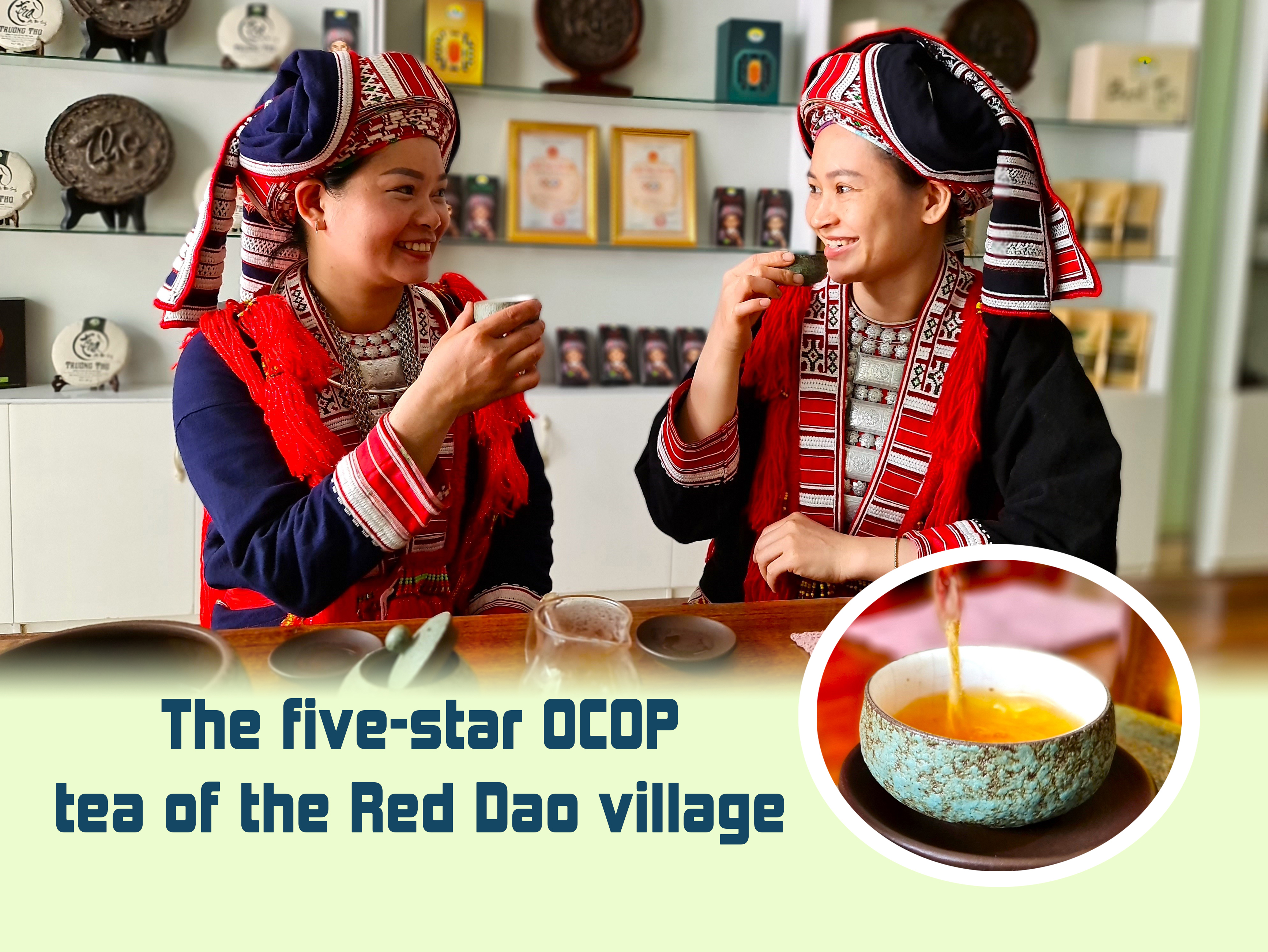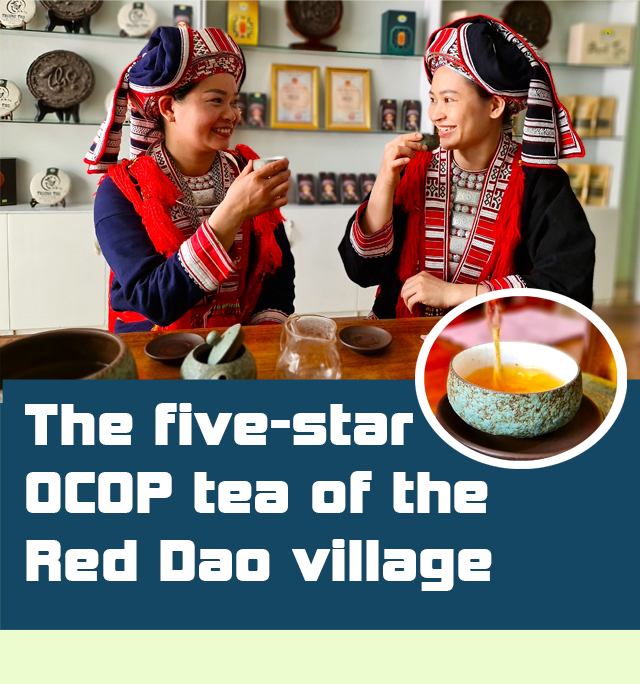On the high mountainside in the Phin Ho area, ancient Shan Tuyet tea trees are famous for yielding the finest tea buds in Ha Giang; their preciousness is akin to gold.

Among the Dao people, Ly Mui Muong is said to be different from girls in Phin Ho village, Thong Nguyen commune, Hoang Su Phi district. Her name suggests it all. For the Dao people, parents naming their daughter Muong wish their girls to become competent not only in working in the village but also in conversing with other villages and ethnic groups. The parents want their daughter to live a life worthy and memorable in the mind of villages.
At a young age, Muong was a tough girl. She dared to walk from the mountains to the central town to study. She then became the first girl in the Dao village to pass the university entrance exam. Upon graduation from the Thai Nguyen University of Education, instead of working as a teacher, Muong returned to the village. She started a career there, choosing to stay with old tea trees and familiar mountainous trails.
Knowing Muong was qualified with her open worldview and skillful communication, Mr. Trieu Ta Hin, the cooperative’s director, and many members elected Muong to be the Deputy Director of Phin Ho Tea Cooperative (cooperative members are households in Phin Ho, the majority of shares are from tea plantations). But some villagers objected. To them, she was still a kid and would be unable to manage the cooperative, teach others tea making, or plan a business. Many times Muong intended to resign from the position as the cooperative’s Deputy Director. But she could not stand the stagnation of tea development as it had only served Phin Ho villagers for many generations. With that thought, Muong buried in her heart the intention to resign.
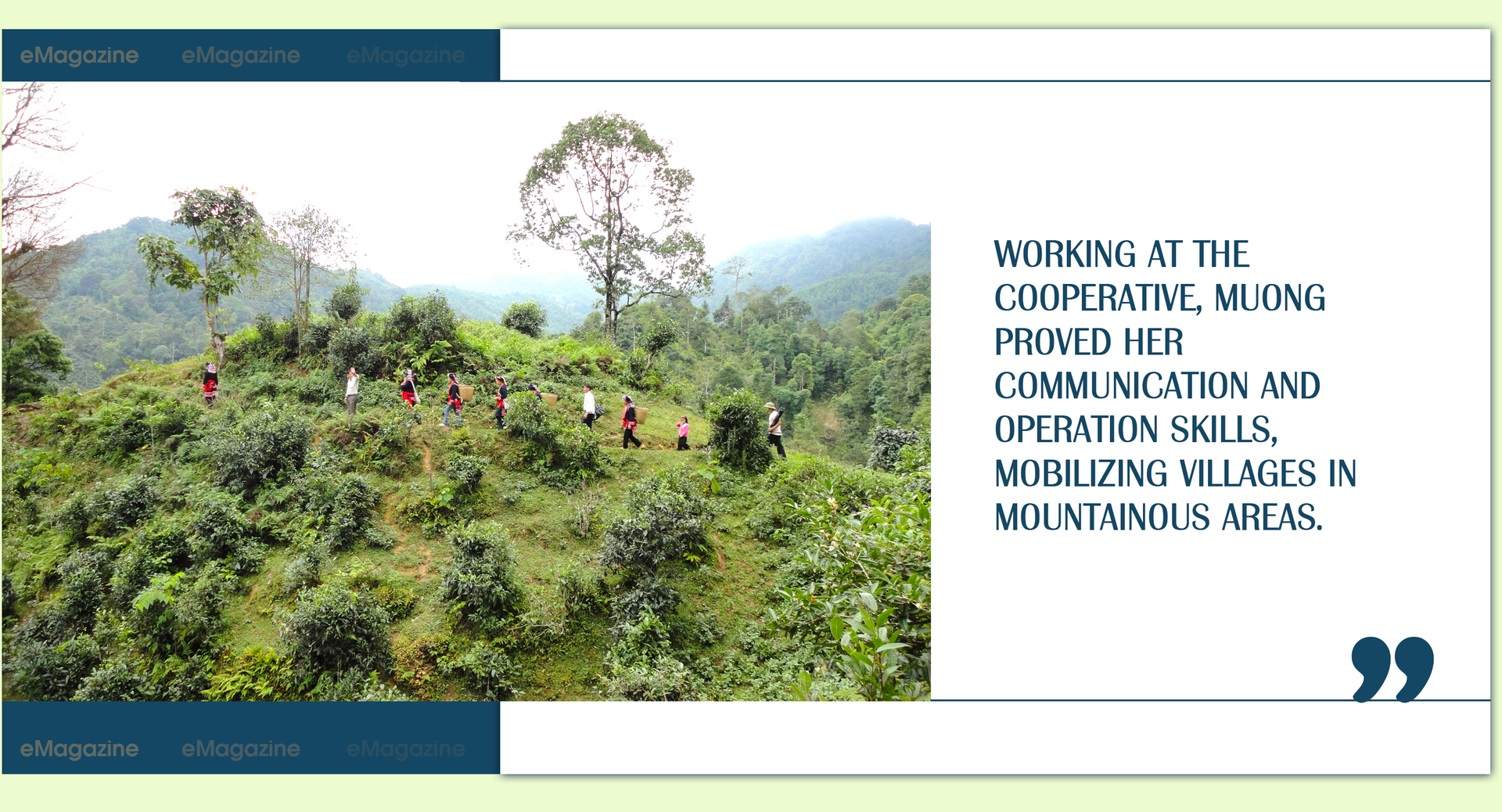
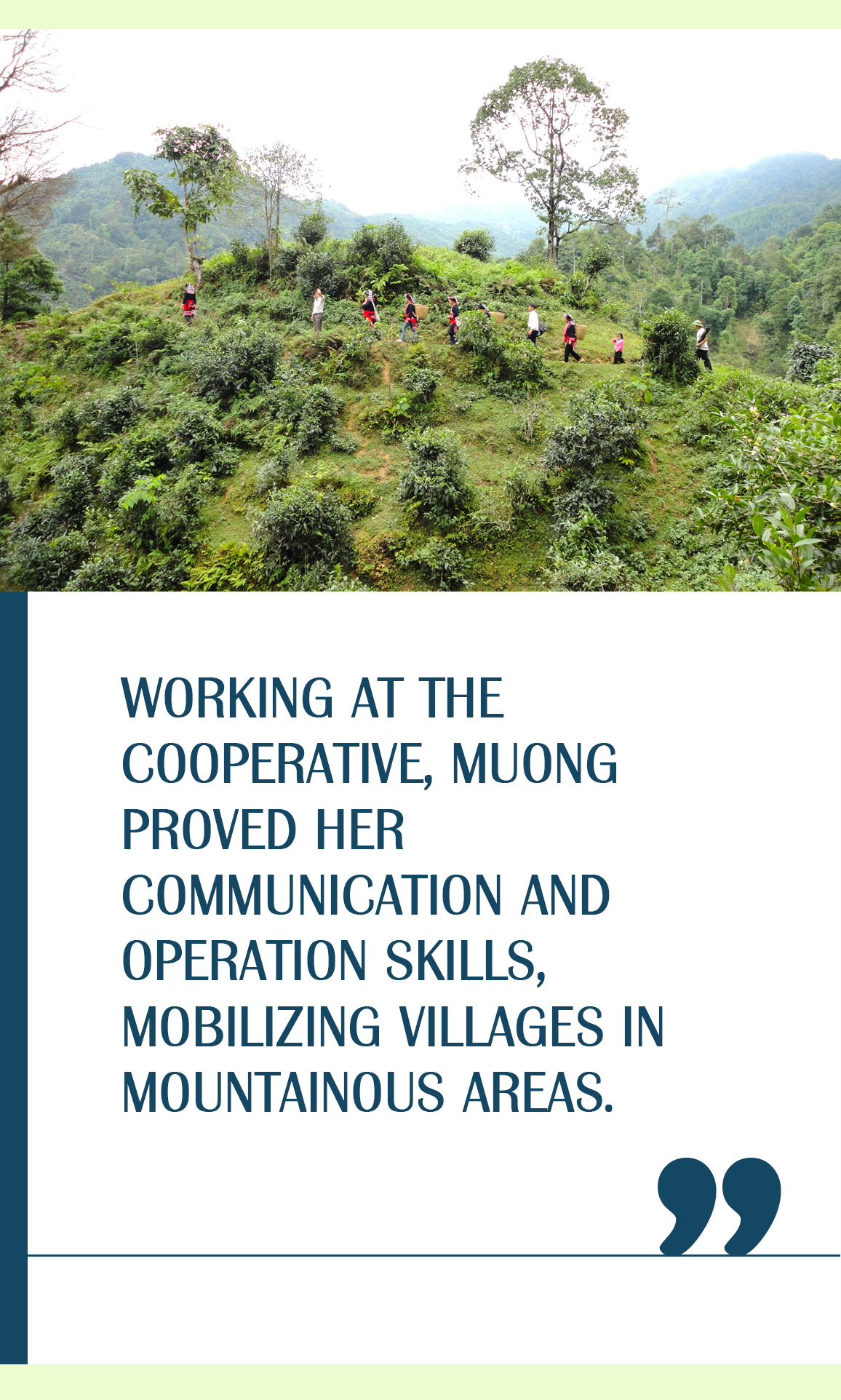
Working at the cooperative, Muong proved her communication and operation skills, mobilizing villages in mountainous areas. Muong connected partners inside and outside the province to sell products; worked together with cooperative members to design appealing packaging; devised a promotional plan for the Phin Ho tea brand. Her innovative contributions helped Phin Ho tea cooperative to gain many orders from other cities. The value of tea products accelerated. The villagers’ neglect gradually eases like old tea leaves falling off the branches and eventually dissolving in the ground.
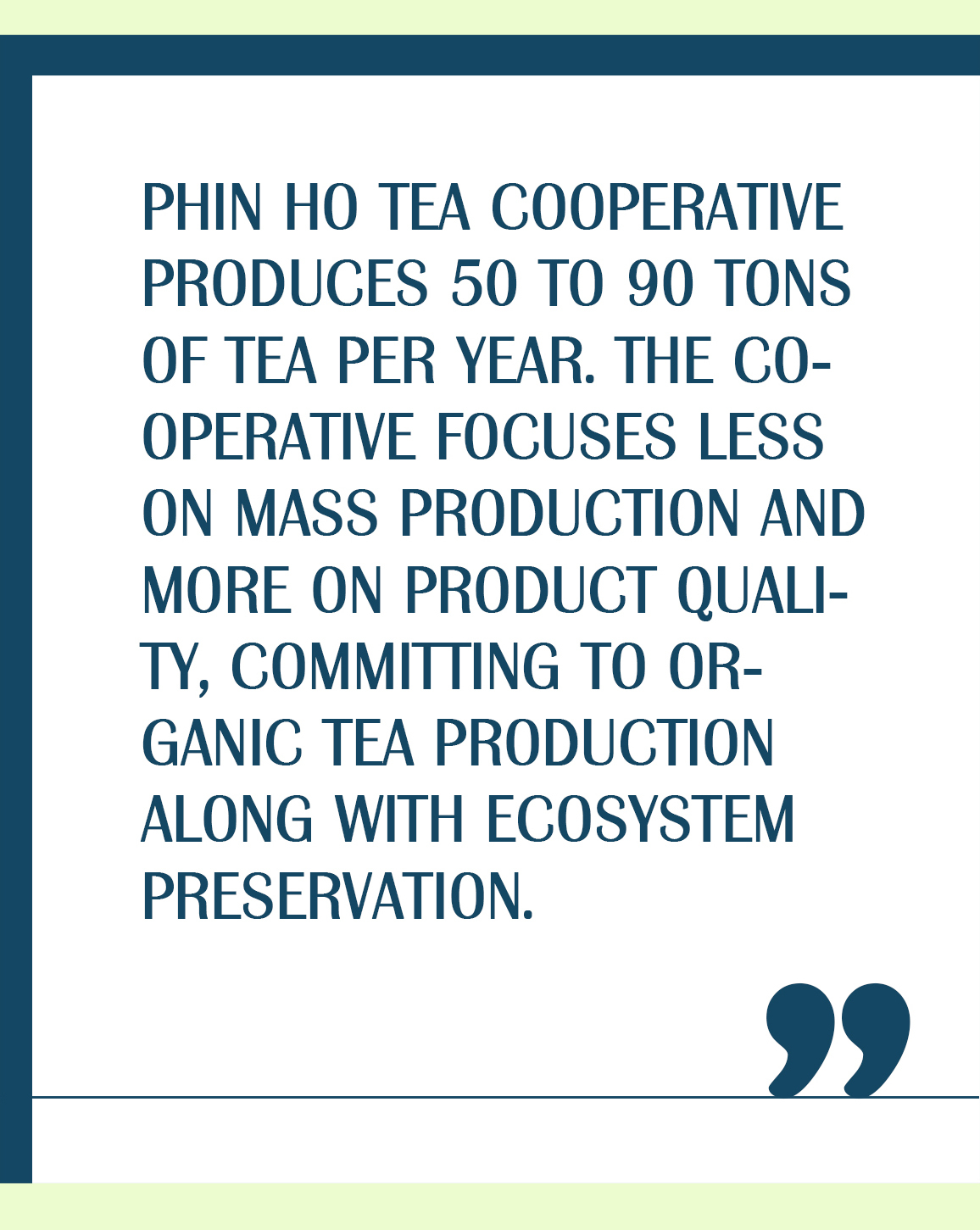
For a while, whenever Phin Ho people gathered in the fields, they talked about the fact that one kilogram of Phin Ho tea had a price equal to a quintal of rice. Especially, specialties such as white tea and red tea were priced up to 12 million VND per kilogram. Never before had the villagers thought of tea trees as resources; they thought their assets only included buffaloes, cows, and crops. They began to conceive of tea production as a life force to purchase televisions and motorbikes. Soon, Phin Ho became one of the richest villages in Thong Nguyen commune.
Since then, every afternoon when the fieldwork is done, people flocked to Ly Mui Muong’s house. The elders discussed with a young woman, who was the same age as their children and grandchildren, how they could preserve and enhance the tea tree’s value. They alone would not be able to figure out a way.
Currently, on average, Phin Ho Tea Cooperative produces 50 to 90 tons of tea per year. The cooperative focuses less on mass production and more on product quality, committing to organic tea production along with ecosystem preservation. The cooperative offers tea products such as Shan tuyet tea, dragon claw tea, white tea, red tea, etc. In June 2021, Phin Ho Tea Processing Cooperative received two five-star OCOP endowments, which are Green Tea (box of 100 grams) and Red Tea (box of 100 grams). The cooperative has also shipped to other countries.
We sat together around a pot of freshly brewed hot tea while it was steeping. By the time the water is hot enough, the pot of white tea is brewed. Muong poured tea to invite me; the tea has a honey-yellow color, rich taste, and a delicate fragrance lingering around the table. Muong asked me: “Do you smell the scent of green rice flakes in the tea? It is the scent of freshly picked tea buds that are processed immediately, which preserves the natural scent. Phin Ho tea is proud to have retained such a peculiar scent that characterizes our land.”
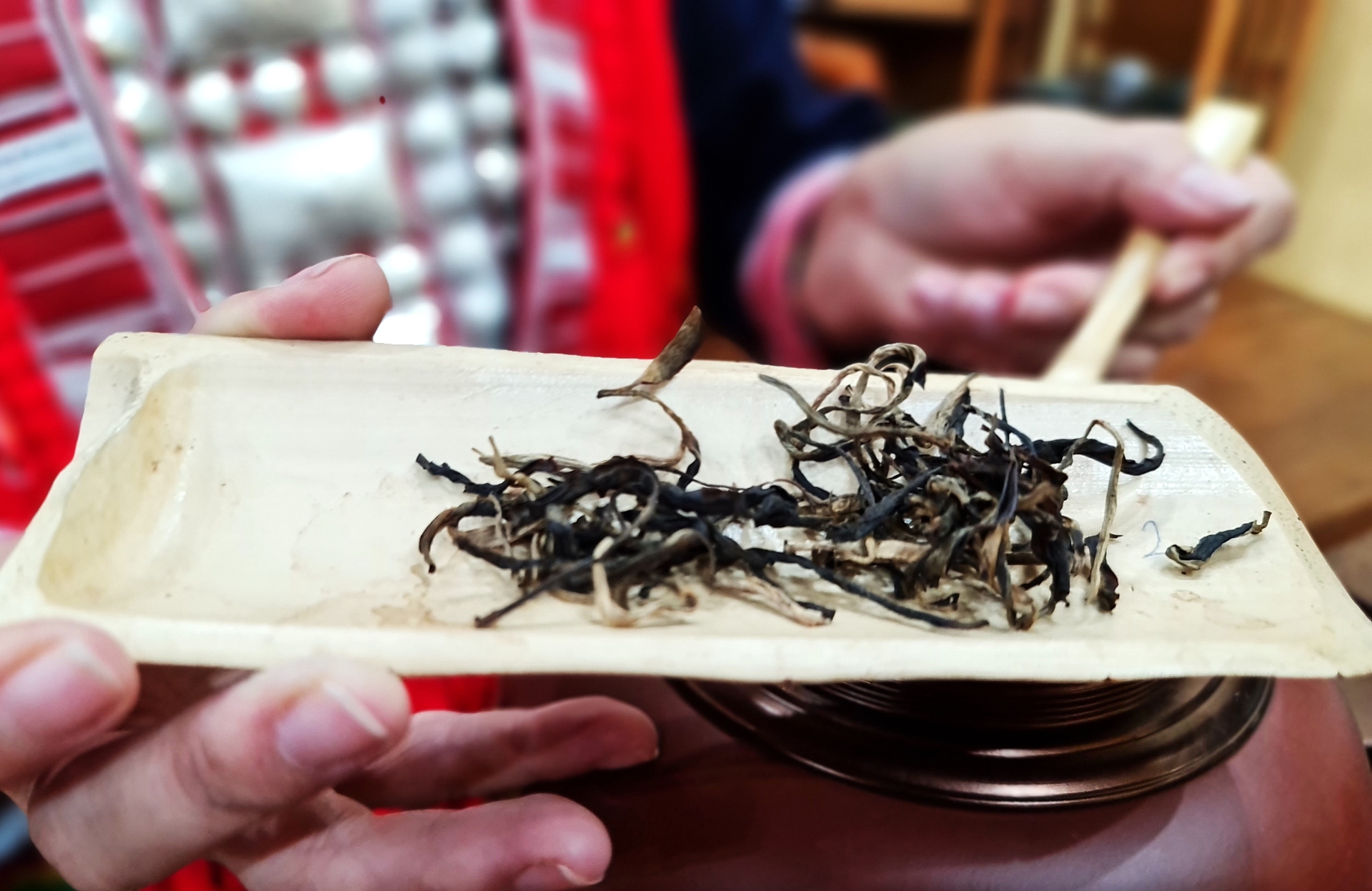

Mrs. Trieu Mui Nghinh – the old lady who represents the village with her image on Phin Ho tea’s five-star OCOP packaging – lives under the canopy of Shan Tuyet tea trees in the old forest, located in Phin Ho valley. She is now 95 years old but her eyes are still sharp. Her taste can still identify the tea’s rich flavor.
Phin Ho Tea Cooperative chose her image to represent the brand because she was an authoritative, trustworthy elderly in the village. Her knowledge of tea making is highly celebrated because she can tell whether it is the best tea only by touching and smelling tea buds. She has taught generations of villagers how to light fires and fry tea leaves in a cast iron pan with bare hands. This process ensures the desirable taste which makes the regional tea stand out among others.
Mrs. Nghinh told us a folktale. Nearly 1,000 years ago, the Red Dao people settled on this mountain and named it Fin Ho. The Red Dao people in Hoang Su Phi translated Fin Ho to Phin Ho. Originally, ‘Fin’ is flat, and ‘Ho’ is a lake. Until this day, amidst the tea area on the Phin Ho plateau, there is still a vast blue lake that never dries up. That lake has witnessed many generations of Dao people growing up and growing old. It has witnessed tea trees sprouting from the soil, reaching high to catch the sun, and after hundreds of years are now ancient trees. The lake is part of the indigenous culture of the Red Dao village.
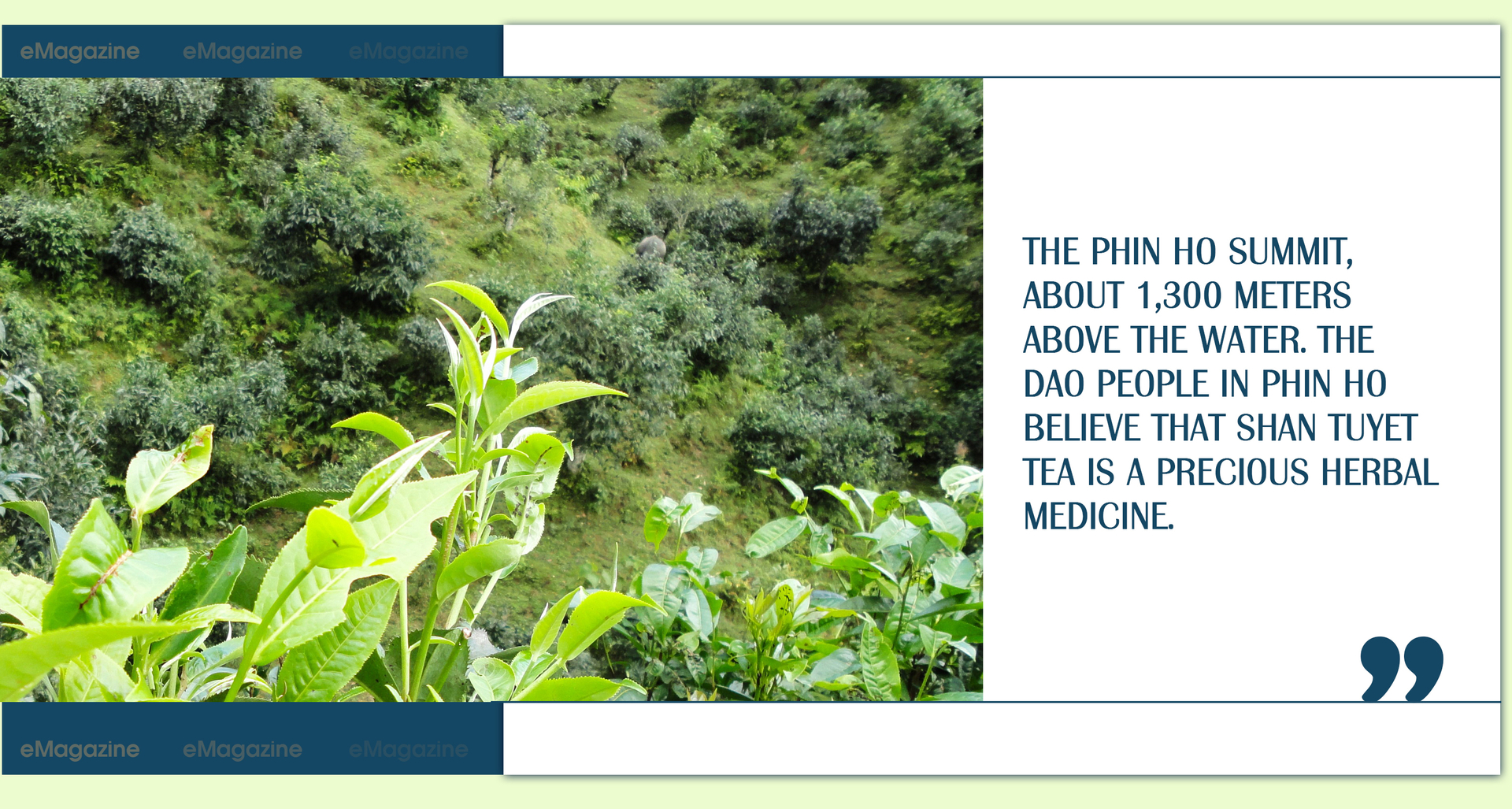

The Phin Ho summit, about 1,300 meters above the water, is the first spot in the Dao village to see the sun. Year-round coolness and dense clouds at the mountaintop are favorable conditions for the tea buds to grow robustly. The tea buds are white as snow, soft and fluffy as if clothed in velvet. Shan Tuyet tea, cultivated in the forest near the lake, is the finest tea in the Tay Con Linh mountain range.
The Dao people in Phin Ho believe that Shan Tuyet tea is a precious herbal medicine.
Not only does the tea bring freshness, help to clear the mind, but it also eliminates toxins, purifies the body, prevents skin aging, and especially, protects the body from diseases such as arthritis, heart disease and reduces the risk of cancer.
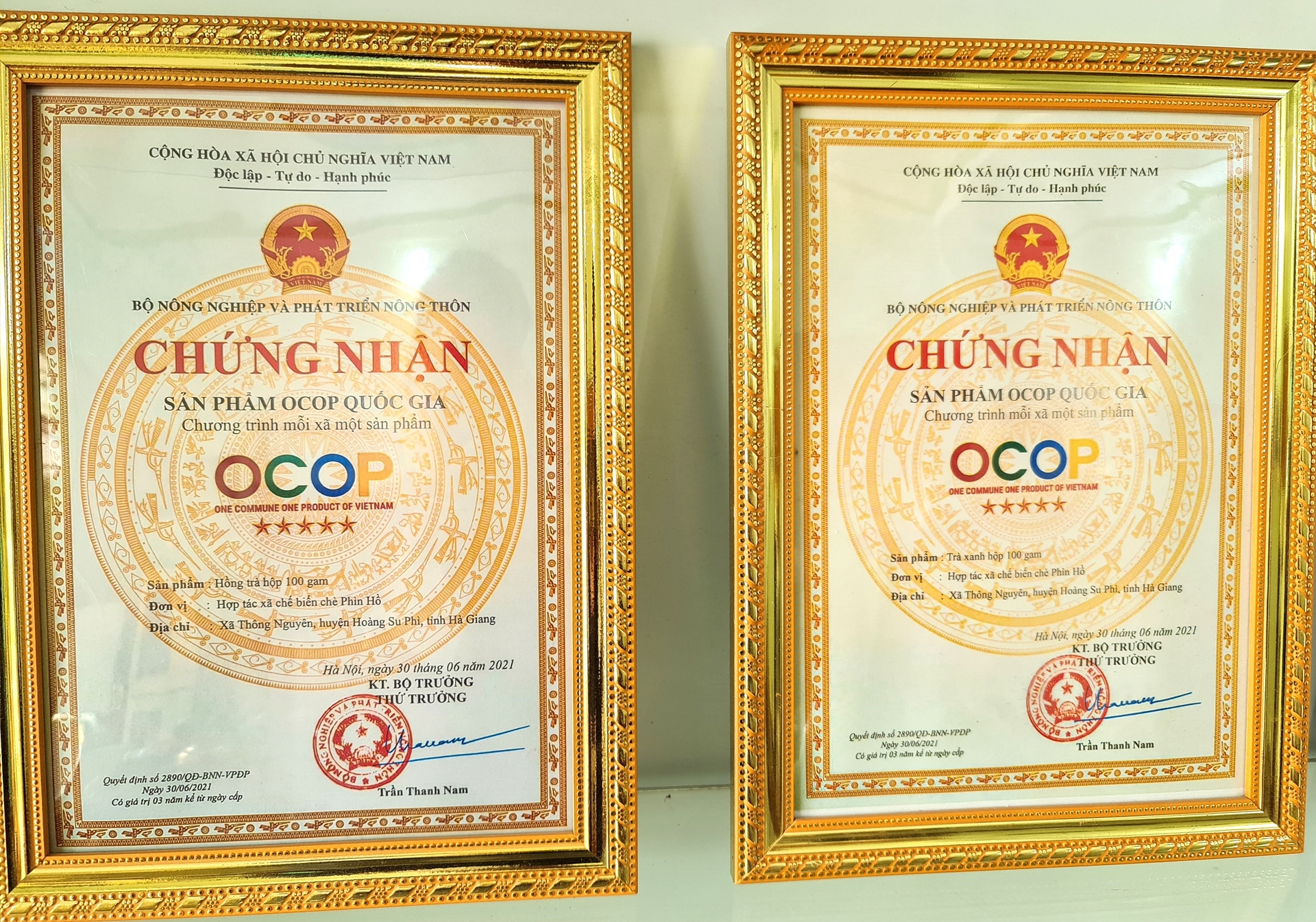
Mrs. Nghinh said that the tea culture of the Red Dao people in Phin Ho could be traced back to ancient times. In the past, tea was simply an offering from the Red Dao people to friends near and far. Sometimes they would sell it but not for a high price. However, recently, ancient tea trees became precious money trees. Everyone loved and nurtured like how they loved lands and fields, their family and relatives.
There are a couple of reasons that an elderly, and not a young woman, represents the Phin Ho tea product. Ly Mui Muong explains, Mrs. Nghinh’s image not only exudes the aura and characterizes the Red Dao people in Phin Ho, but also celebrates her tea connoisseurship, family love, and dedication to the village.
Mrs. Nghinh’s image represents the Red Dao people in Phin Ho’s appreciation of the Shan Tuyet tea tree.

In Phin Ho village, Thong Nguyen commune, every forest has Shan Tuyet tea trees. Some tea trees are infant, but some are mature and ancient. For many years, tea trees have lived closely with the Red Dao village in Phin Ho.
The tea trees also provide people with the best quality tea products in the highlands, which have received a five-star OCOP endowment. Ha Giang province has recognized 1,629 tea trees as heritage trees, 1,324 of which were recognized in 2022. Ha Giang is also the province with the largest number of ancient Shan Tuyet tea trees recognized as heritage trees in Vietnam. To preserve this rare tea species, people have numbered each heritage tree.
The day we went to Phin Ho, we received news that a number of 600-year-old trees had died not long ago. Muong told me that, like humans, tea trees also have a circle of life: they are also born from the soil and die returning to mother earth.
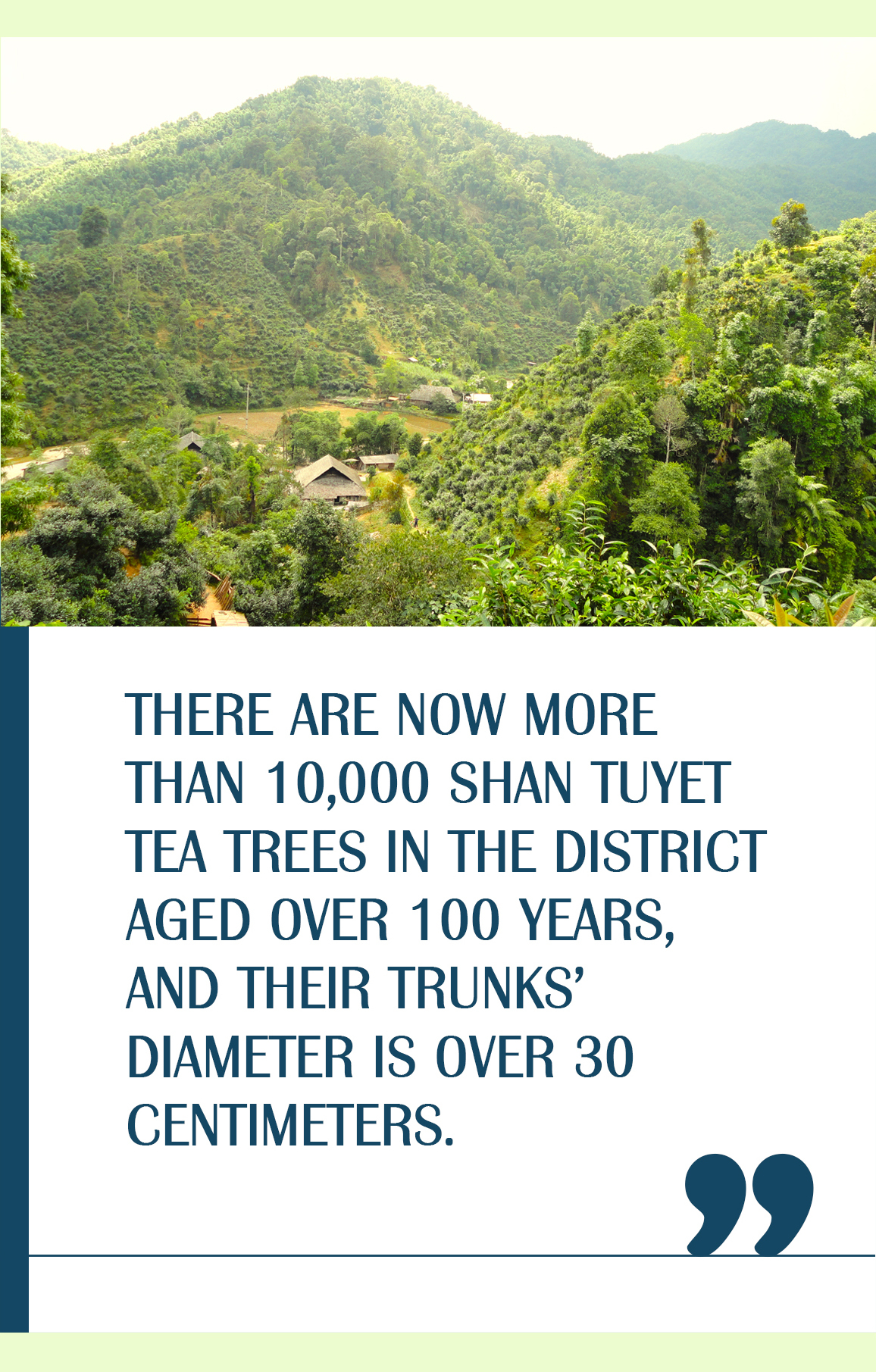
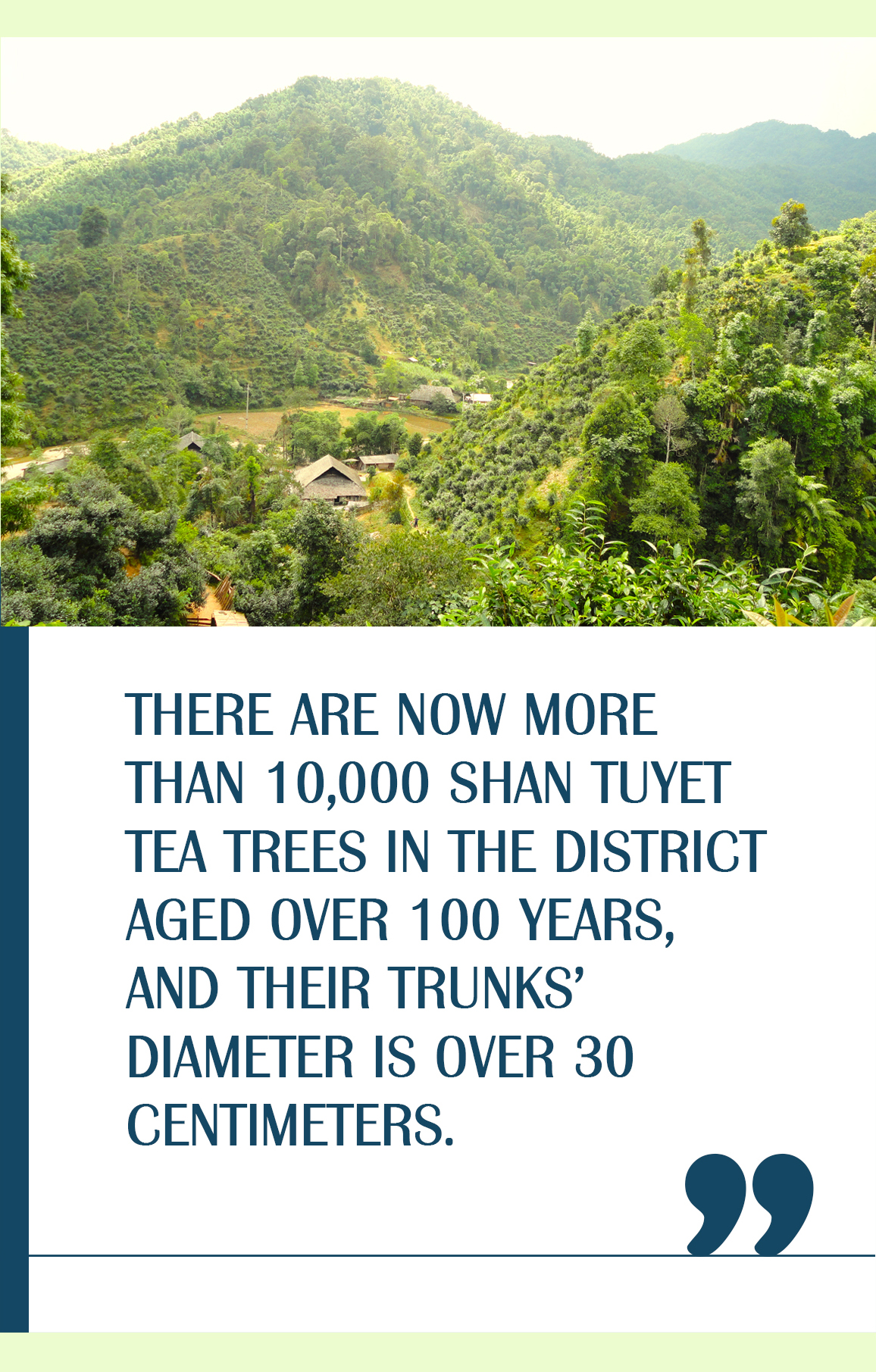
The oldest tea tree in Mr. Trieu Van Xeng’s garden, Nam Tien village, Nam Ty commune, still produced great tea buds every year. In recent years it produced fewer buds, but no one knew that it signified the end of its life. It was difficult to detect tea plants rotting from within.
When Mr. Xeng went to visit the tea tree, it had already shed its last yellow leaves on the ground; its trunk was no longer alive and was peeling off. The old tea tree died from the core. After that day, Mr. Xeng was too sad to leave home. The teapot, always hot and brewing flavorful Shan Tuyet buds, now sit still and cold. When the tea tree died, Mr. Xeng mourned as if he mourned the death of a loved one.
Mr. Xeng owns about two hectares of Shan Tuyet tea. In the tea season, it takes his family a whole month to pick all the buds. Since the death of the oldest tree, Mr. Xeng has been sad and worried about the healthiness of the old tea trees in the field. Many specialists and officials have arrived to inspect and research. He also regularly checks on tea plants with unusual signs so that he can report to officials and receive advice.
Mr. Xeng always takes care of his tea fields by limiting pests and diseases under the roots, creating a layer of humus for plants to grow, and pruning so that the tree can grow and bloom. Last year, Mr. Xeng’s tea forest earned his family 30 million VND.
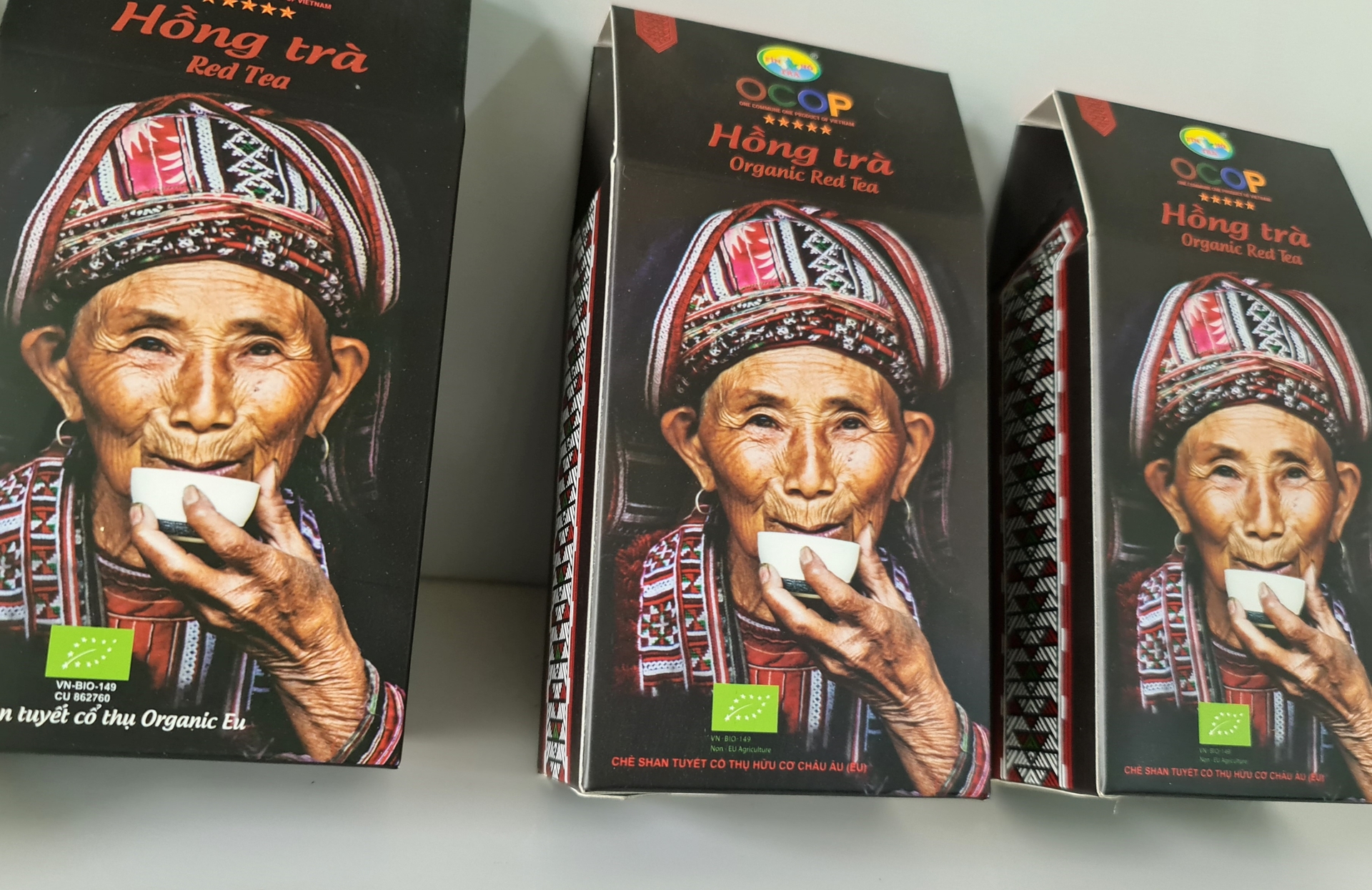
From the top of Phin Ho summit, one’s eyes indulge in the Ha Giang scenery, layered by tea trees from one mountain to another. Hoang Su Phi district has an average altitude of over 1,000 meters above sea level. This place is known as an ancient Shan Tuyet tea area, in which many trees live up to several hundred years old. Among them, 1,200 Shan Tuyet tea trees are recognized as Vietnam heritage trees. The ancient Shan Tuyet tea trees connect the villages along the Tay Con Linh mountain, from Nam Ty, Thong Nguyen, and Ho Thau to Ta Su Choong and Tung San. To preserve and conserve national heritage trees, local authorities have implemented to promote the value of ancient trees, increasing income for tea-growing households.
According to the Department of Agriculture and Rural Development of Hoang Su Phi district, there are now more than 10,000 Shan Tuyet tea trees in the district aged over 100 years, and their trunks’ diameter is over 30 centimeters. To be recognized as a heritage tree, the tea must be over three meters high and live for over 200 years.
Head of the Agriculture Department of Hoang Su district, Phi Ly Choi Nhan, said that the ancient Shan Tuyet tea tree has unique environmental, cultural, and historical values, representing the lives of ethnic minorities living in the area. Therefore, having over 1,200 tea trees recognized as heritage trees is of great significance to the Hoang Su Phi district in preserving, conserving, and further promoting the value of ancient tea trees.
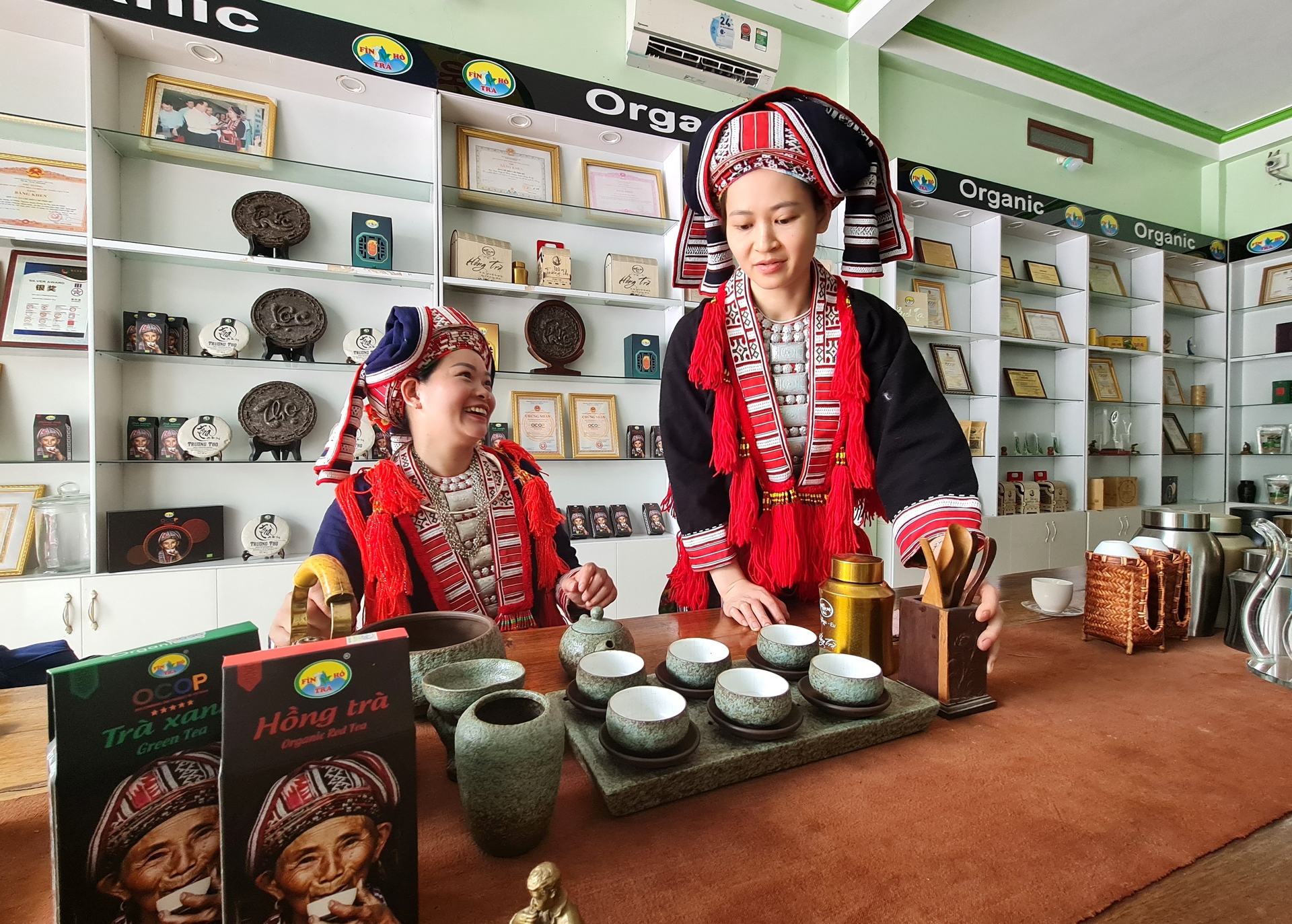
Heritage tea trees are abundant and organic farming is prioritized, but for many years, the heritage tea area in Hoang Su Phi has remained stagnant. In many cases, people give up tea because tea production is difficult and unprofitable. Director of Ha Giang Department of Agriculture and Rural Development, Hoang Hai Ly, was formerly Secretary of the District Party Committee Hoang Su Phi. He understands very well the advantages, strengths, and challenges of this location.
Mr. Ly said that the tea tree has a lot of potential, but people living in the tea area are still poor. Farming to compete with the lowland economy will be difficult. Because of the complex terrain and geographical distance, tea is high in production costs. Therefore, tea trees, among other agricultural products in Ha Giang, must have the plan to deliver indigenous richness to the market in order to compete with the others. It is necessary for small-scale production households to connect and insert into products their own unique stories.
Indeed, Hoang Su Phi tea cannot follow the direction of mass technology like midland regions such as Thai Nguyen, Tuyen Quang, or Lam Dong. Tea trees have long lived with the villages. The ancient tea trees, which grew naturally, should be associated with the villages’ stories.
When the story of tea trees helps to promote tourism, it delivers multi-layered values.
The Shan Tuyet tea generates not only financial but also cultural values for its producers – citing the very history of how tea trees entwine the land and sky of Tay Con Linh, the villages of the Dao, the Nung, and the H’mong.
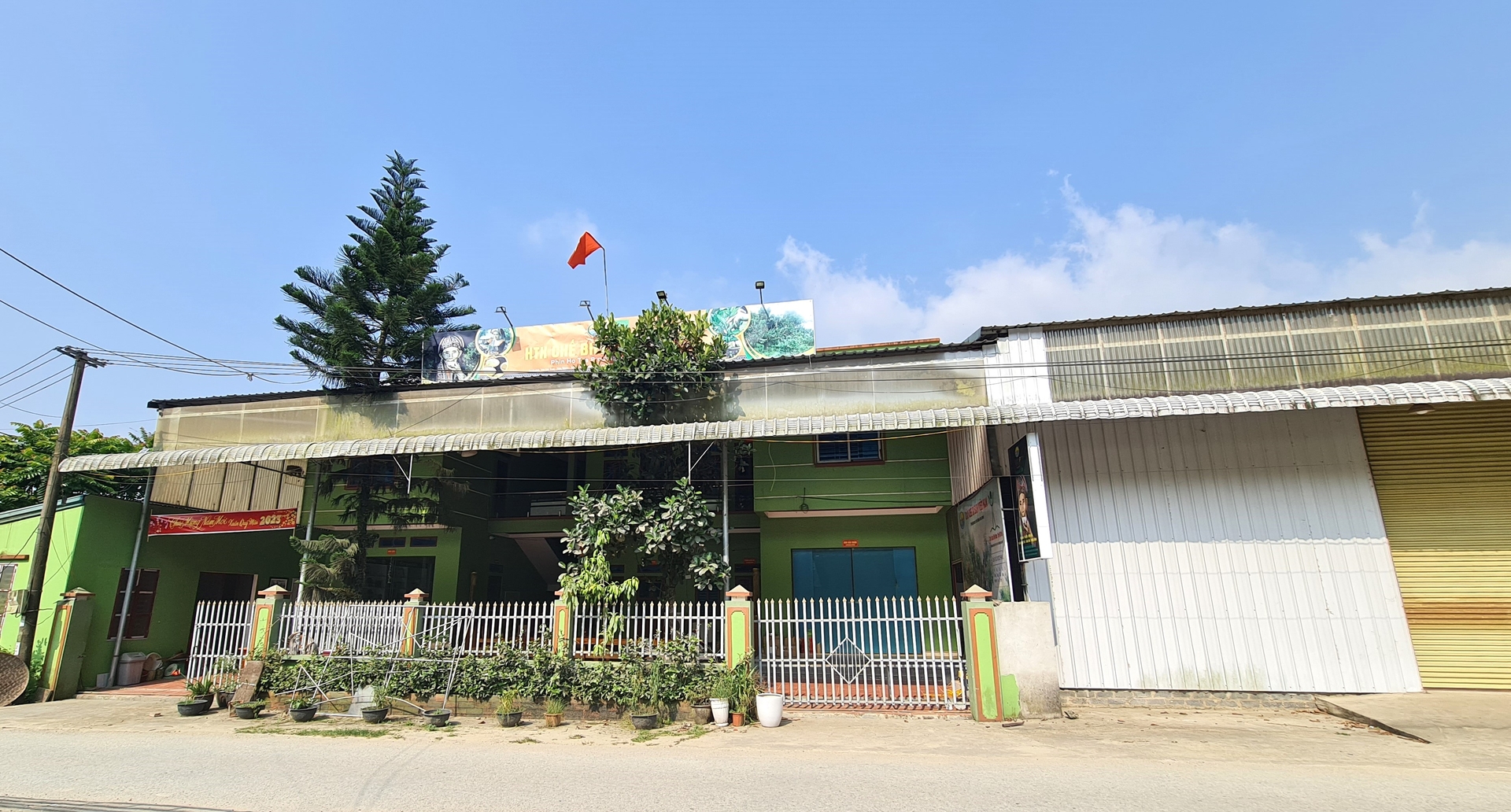
Authors: Dao Thanh - Kien Trung
Translate: Quynh Chi
Photo: Dao Thanh - Kien Trung
Designed by VAN


